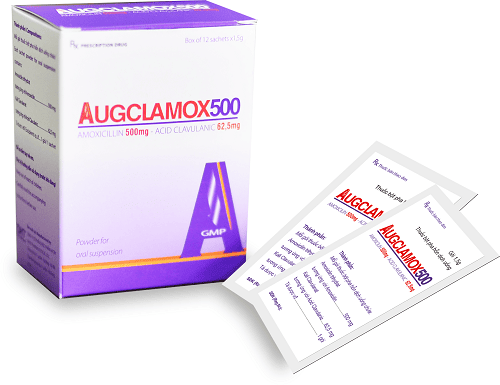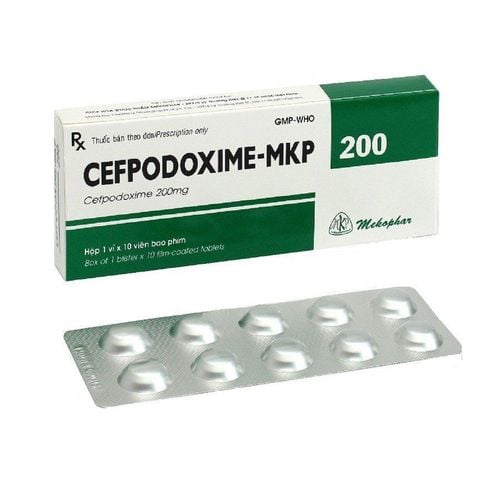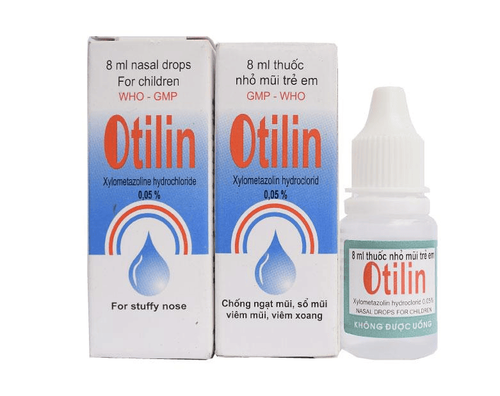This is an automatically translated article.
Vialexin - is an oral tablet that supports the treatment of infections of the respiratory tract, ENT, urinary, genital, soft tissue and skin. So what is Vialexin and how does it work? Find out in the article below.
1. Uses of Vialexin
1.1. What is Vialexin? Vialexin belongs to the group of anti-infective drugs, with registration number VD-0099-06, produced by Vidipha Central Pharmaceutical Joint Stock Company - one of the leading pharmaceutical companies in Vietnam.
Vialexin medicine includes the active ingredient:
Cephalexin 250mg (in the form of cephalexin monohydrate). Excipients: tapioca starch, lactose and magnesium stearate. The drug is prepared in the form of hard capsules 10 tablets 1 blister, 1 box of 10 blisters
1.2. What does Vialexin do? Cephalexin is a first-generation cephalosporin antibiotic with bactericidal action through inhibition of bacterial cell wall synthesis. The drug binds to one or more penicillin-binding proteins (PCPs) thereby inhibiting peptidoglycan synthesis in the bacterial cell wall, thereby inhibiting cell wall synthesis. Cephalexin is an oral antibiotic with an antibacterial spectrum against gram-positive aerobic bacteria: Corynebacterium diphtheriae, Propionibacterium acnes, methicillin-susceptible Staphylococcus, Streptococcus pneumoniae and gram-negative aerobic bacteria such as Branhamella catarrhalis, Citrobacter koseri, Klebsiella , Neisseria gonorrhoeae or anaerobic bacteria: Fusobacterium, Prevotella.
Cephalexin after entering the body is absorbed quickly and almost completely in the gastrointestinal tract. It is then distributed in most body tissues and fluids including gallbladder, liver, kidney, bone, sputum, pleural fluid and synovial fluid. However, the concentration of drug absorbed into the cerebrospinal fluid is not significant. Cephalexin can cross the placenta and is excreted in breast milk in very low concentrations.
Indications:
Vialexin 250 brand-name drugs are indicated in the following cases:
Respiratory tract infections: Acute / chronic bronchitis and superinfected bronchiectasis. Ear, nose and throat infections: Otitis media, mastoid osteomyelitis, sinusitis, tonsillitis, and pharyngitis. Urinary tract infections: Cystitis and prostatitis. Prophylaxis of recurrent urinary tract infections. Skin, soft tissue and bone infections. Prophylaxis of bacterial pericarditis. Use cephalexin as an alternative to amoxicillin or ampicillin for the prophylaxis of pericarditis caused by hemolytic Streptococcus ɑ (Viridans group) after respiratory procedures, tooth extraction, or in cases of penicillin allergy. Note: Culture and susceptibility testing of bacteria should be performed before and during treatment. Renal function should be monitored during treatment in patients with renal impairment.
2. Usage of Vialexin
2.1. How to take Vialexin Vialexin is made in the form of hard capsules and should be taken orally. Time of taking the drug: Take on an empty stomach, 1 hour before meals. 2.2. Dosage of Vialexin Children over 15 years old and adults: Take 250 - 500mg every 6 hours, depending on the level of infection, the doctor or specialist can adjust the dose. The maximum dose can be up to 4g/day. Respiratory tract infections: Take 250-500mg every 6 hours for mild to moderate infections. Use higher doses in severe infections or infections with bacteria less sensitive to antibiotics. Pharyngitis and tonsillitis : Take 500mg every 12 hours, orally for at least 10 days. Urinary tract infections: Treatment of uncomplicated cystitis, 500mg orally every 12 hours, for 7-14 days. Skin and skin structure infections: Take 500mg every 12 hours. Bone and joint infections: Take 250mg every 6 hours for mild to moderate infections. Use higher doses in severe infections or infections with bacteria less sensitive to antibiotics. Dosage adjustment for patients with renal impairment:
Caution should be exercised when administering Vialexin to patients with severe renal impairment. In case of use, close monitoring of renal function is required: If creatinine clearance > 40 ml/min: No dose reduction is required. If creatinine clearance 40-11 ml/min: 500mg every 8-12 hours. If creatinine clearance 10 - 5 ml/min: 250 mg every 12 hours. If creatinine clearance < 5 ml/min: 250 mg every 12-24 hours. Adjust the dose for patients during dialysis:
Hemodialysis: 1 dose usually given after dialysis. Continuous peritoneal dialysis at home: Dosage as in patients with renal failure. Overdose and treatment in case of overdose:
Common symptoms of overdose are nausea, vomiting and diarrhea. However, in some cases may cause neuromuscular hypersensitivity and seizures, especially in patients with renal impairment. How to handle overdose:
No need to do gastric lavage, unless you have taken Vialexin at a dose of 5-10 times the normal dose. Dialysis can help remove drugs from the blood, but is usually not needed. Protect the patient's respiratory tract, support ventilation, administer fluids in case of overdose. Give activated charcoal several times to replace or supplement gastric lavage. The patient's airway should be protected while gastric lavage or activated charcoal is being used.
3. Contraindications of Vialexin
Vialexin 250 is contraindicated in the following cases:
There is a history of allergy to penicillin antibiotics or any antibiotic of the β-lactam group. Patients with systemic infections require intravenous cephalosporin treatment.
4. Warnings and cautions when using Vialexin
Prolonged use may cause overgrowth of non-susceptible bacteria or fungi (eg, Candida, Enterococcus, Clostridium difficile). There is a risk of pseudomembranous colitis with the use of broad-spectrum antibiotics. Patients with renal impairment need to adjust the dose of Vialexin appropriately. Use caution in the first months of pregnancy. When taking Vialexin can cause positive Coombs test. Vialexin contains lactose as an excipient. Therefore, it should not be used in patients with galactose intolerance, the Lapp lactase deficiency and glucose-galactose malabsorption. For pregnant or lactating women: Only use Vialexin for pregnant women when absolutely necessary. The concentration of Vialexin in breast milk is very low, however, consideration should be given to stopping breastfeeding while the mother is taking Vialexin. Be careful when driving or operating machinery because the drug can cause headache and dizziness as a side effect.
5. Drug interactions
Taking high doses of Vialexin in combination with aminoglycosides or potent diuretics may adversely affect renal function. Vialexin reduces the effect of the estrogen component of birth control pills. Vialexin binds to Cholestyramine in the intestine, slowing the absorption of Cholestyramine. Probenecid increases serum concentrations, increasing the half-life of Vialexin. At the same time, Probenecid slows down the renal excretion of Vialexin. Vialexin may decrease the effectiveness of typhoid vaccine.
6. Vialexin side effects
The rate of adverse reactions is about 3-6% of the total number of people treated. During the use of Vialexin, patients may still experience side effects such as:
Common: Diarrhea, nausea and vomiting. Uncommon: Eosinophilia, rash, urticaria, pruritus, reversible increase in hepatic transaminases, anxiety, confusion, dizziness, fatigue, hallucinations and headache. Rare: Anaphylactic reactions, neutropenia, thrombocytopenia, pseudomembranous colitis, hepatitis, cholestatic jaundice, Stevens-Johnson syndrome, erythema multiforme, Lyell's syndrome, Quincke's edema, genital itching and vaginitis. If you experience these symptoms, the patient should stop using Vialexin and notify the doctor for appropriate treatment.
7. How to store Vialexin
Vialexin should be placed in the original packaging, located in a dry room, away from sunlight. The best storage temperature for Vialexin is below 30°C. Keep out of reach of CHILDREN. Above is all information about Vialexin, patients need to carefully read the instructions for use, consult a doctor / pharmacist before using. Absolutely do not arbitrarily buy Vialexin treatment at home because there may be unwanted side effects.
Please dial HOTLINE for more information or register for an appointment HERE. Download MyVinmec app to make appointments faster and to manage your bookings easily.













